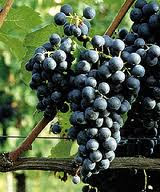When trying to understand biodynamic winemakers we must first realize that it is more of a religion, a spiritual lifestyle, than an actual science. Biodynamics is based on the theories Rudolf Steiner developed in the 1920’s. His basic philosophy was that vineyards were self-sustaining living organisms. Furthermore, he felt that the earth and, in fact, the entire solar system was a living organism all connected, all working on the same seasonal rhythm. I find it fascinating that these theories pre-dated James Lovelock’s Gaia theory by forty years or so.
On the basis of the theory that the solar system is an organism working on a specific clock all agricultural work done by winemakers following biodynamics is to be timed with the seasons and moon phases. There are nine compost preparations that are applied when the moon is positioned in Capricorn, Taurus, or Virgo. Sometimes the fertilizer is sprayed directly onto the plants, other times applied to the ground. The fertilizer is obviously all natural and is generally composed of either manure or quartz (silica). By applying biodynamic compost in tune with the rhythms of the earth it is believed that the soil, a living breathing entity itself, is more in tune with the lunar cycles. Among the benefits are that it is less susceptible to fungus and rot and encourages better growing and deeper roots.
The organic fertilizer used in this method is made up of waste from the vineyards. Winemakers add a starter ingredient to get things activated. Some starters are yarrow, chamomile, stinging nettle, oak, or dandelion. Dealing with vine pests is done in the least invasive way possible and without any chemical addition to the earth. Generally they are collected and burnt in order to warn off other pests of their kind.
▪ Preparation 500 - Cow manure is fermented and then buried in cow horns in the soil over winter. The horn is then dug up, its contents are then stirred in water and sprayed on the soil. This promotes activity in the soil and stimulates microbiotic life.
▪ Preparation 501 - Ground quartz is buried in cow horns in the soil over summer. The horn is then dug up, its contents are then stirred in water and sprayed over the vines at daybreak. This enhances light metabolism and the photosynthesis in the plant.
▪ Preparation 502 - Flower heads of Yarrow are fermented and buried in a stag's bladder. This is applied to compost 500 to help breakdown the manure.
▪ Preparation 503 - Flower heads of Chamomile are fermented in a cow intestine. This is applied to compost 500 to help breakdown the elements of the manure.
▪ Preparation 504 - Stinging Nettles tea that can be applied to weak or low vigor vines. This also would be applied to compost 500.
▪ Preparation 505 - Oak bark is fermented in the skull of a farm animal. The skull's contents are removed and inserted in the compost 5000.
▪ Preparation 506 - Dandelion flowers are fermented in a cow mesentery (peritoneum). The mesentery's contents are removed and inserted in the compost 500.
▪ Preparation 507 - Valerian flower juice is inserted into the compost 500.
▪ Preparation 508 - Common Horsetail made either as a fresh tea or as a fermented liquid used as a vineyard spray to discourage fungal disease.


















